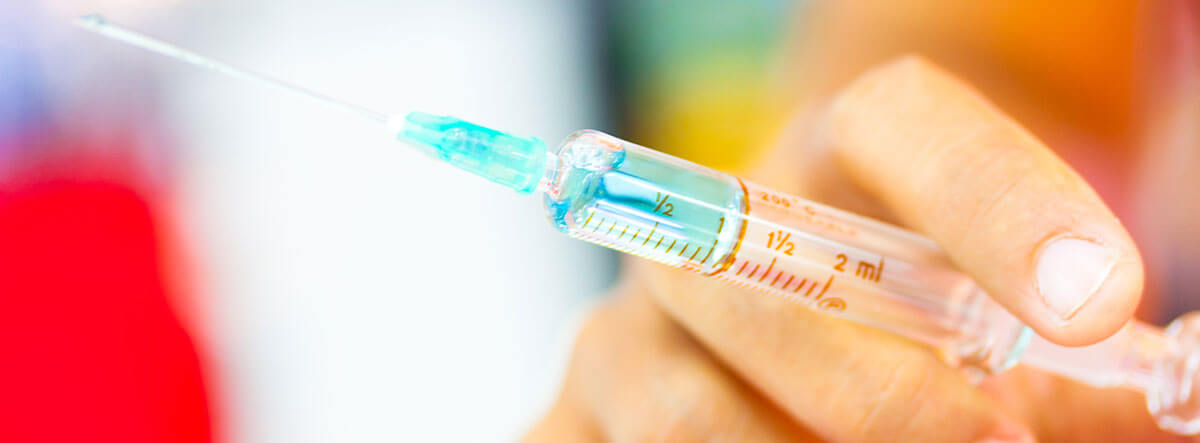Sharps Injury Reductions | Journal of Infection Control

Study shows sharps injuries dramatically reduced through use of Sharpsmart safety device
A safety enhanced sharps disposal container could prevent more than 19,000 accidental needlesticks and other sharps injuries to healthcare workers, suggests a study published in the current issue of the American Journal of Infection Control. The study found the use of the Daniels Sharpsmart sharps disposal container reduced the number of container-associated sharps injuries that occurred in a group of 14 hospitals over one year by 81% . The number of sharps injuries were four-fold fewer in those hospitals compared to 14 hospitals that used a different sharps disposal container.
Healthcare workers stuck by sharps such as needles, scalpels, scissors and lancets are at risk of being infected by one of more than 60 blood borne diseases, the most worrisome being HIV and Hepatitis B and C. Hospital healthcare workers alone incur about 50,000 sharps-related injuries yearly in Canada, according to the latest Expo-stop study. Sharps injuries also can occur in other healthcare settings, including physician and dentist offices, clinics, nursing homes and even private homes.
The Daniels Sharpsmart sharps container incorporates Human Factors Engineering in its design which enables it to accommodate a broader spectrum of user behaviour in sharps disposal. This enhanced safety is achieved with a larger opening, a larger “staging area” (between the opening and the container area), a gravity-activated deposit tray, overflow protection, one-hand-enabled disposal and safe final-closure activation.
In 2001, a national effort to reduce needlesticks resulted in a dramatic 34% drop in such injuries a year after enactment, but the incidence has remained stable since then. “Other than a few modest improvements, sharps containers haven’t changed much in several years,” said lead author Terry Grimmond, a consultant microbiologist who designed the study as well as the data collection method.
“This study suggests that design improvements can significantly reduce the effects of risky human behaviour.”
Terry Grimmond
The Daniels Sharpsmart containers were installed in 14 Ascension Health group hospitals throughout the United States between December 2005 and February 2007; data collection concluded in February 2008. Researchers studied the number of sharps injuries incurred by those hospitals in the year before the new containers were installed and the year after. Researchers also collected container-associated sharps injuries data from a control group of 14 similar-sized Ascension hospitals. Healthcare workers were unaware a study was being conducted.
Findings included:
2.9 container-associated injuries per 1000 full-time employees occurred in the year before the new devices were installed compared to .6 afterward, an 81% decrease. The control group registered a 7% decrease in container-associated injuries. Before the new devices were installed, 58 container-associated sharps injuries occurred, compared to 11 in the year after they were installed, a five-fold decrease. The control group registered 52 container-associated sharps injuries the first year, and 49 the second. The rates of transmission of pathogens via a needle previously used on an infected patient are: 60 to 300 in 1000 for hepatitis B; 5 in 1000 for hepatitis C; and 1 in 1000 for HIV, according to data published in 1998, the most recent year for such statistics. In addition to the health risks, needlesticks are expensive, costing up to $4,838 per injury, according to a 2007 study published in the journal Infection Control and Hospital Epidemiology, and those costs don’t include lawsuits, compensation or the cost of drugs to prophylactically treat the healthcare worker.
“The fact that the number of needlesticks that occur have not been going down since the 2001 safety campaign shows the need for a safer system, the features in the Sharpsmart device specifically address the areas and actions most likely to result in an injury and protect against the most frequent accidents.”
David Skinner, Vice President of Daniels Health
The Sharpsmart reusable sharps containers were launched by Daniels Sharpsmart in 1999 and is now used in thousands of healthcare facilities in the U.S., Canada, the U.K., Australia, New Zealand and South Africa.
Full copies of the study are available from the American Journal of Infection Control (copies are free to APIC members).
Let's Talk!
Your time is valuable, and we don’t want to play hard to get. You can either phone us directly on the details listed on our contact page, or feel free to fill out this short form and one of our team members will get back to you as quickly as possible.